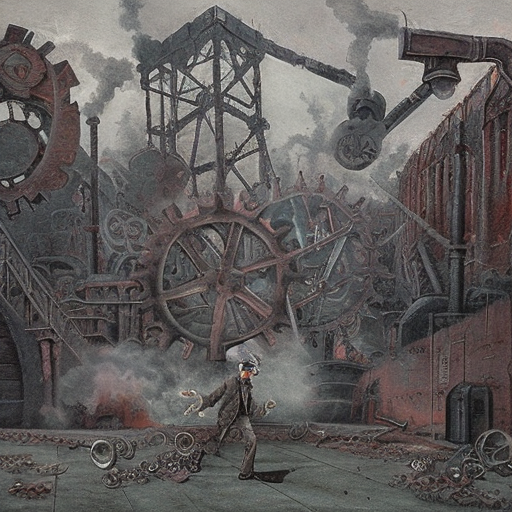Summary of “Modern Times” by Charlie Chaplin
One-line Summary:
“Modern Times” is a timeless classic that satirizes the dehumanizing effects of industrialization and modernity through the comedic misadventures of a factory worker and a young homeless woman.
Main Cast and Crew:
- Director: Charlie Chaplin
- Writer(s): Charlie Chaplin
- Key Actors: Charlie Chaplin as The Tramp, Paulette Goddard as The Gamin
- Music Director: Charlie Chaplin
- Director of Photography: Ira H. Morgan, Roland Totheroh
- Producers: Charlie Chaplin, Henry Bergman
Plot:
“Modern Times” follows the misadventures of a factory worker, known as The Tramp (Charlie Chaplin), as he struggles to survive in the mechanized world of the 1930s. The film opens with The Tramp working on an assembly line, tightening bolts on a conveyor belt. The monotony and relentless pace of the job eventually drive him to a nervous breakdown.
After recovering, The Tramp is mistakenly arrested during a workers’ protest and is sent to jail. Upon his release, he finds it difficult to secure employment due to the economic depression. He eventually lands a job as a night watchman in a department store, where he encounters a young homeless woman, The Gamin (Paulette Goddard).
The Tramp and The Gamin form a bond and navigate the challenges of poverty together. They face various obstacles, including hunger, homelessness, and the threat of separation. Despite their hardships, they find moments of joy and laughter, highlighting the resilience of the human spirit.
Throughout the film, Chaplin uses physical comedy and visual gags to satirize the dehumanizing effects of industrialization. He highlights the absurdity of the modern world, where workers are reduced to mere cogs in a machine. The Tramp’s struggles symbolize the loss of humanity and individuality in the face of progress.
Themes and Motifs:
“Modern Times” explores themes of alienation, the impact of technology on society, and the resilience of the human spirit. The film critiques the dehumanizing effects of industrialization and the pursuit of efficiency at the expense of human well-being. It also emphasizes the importance of human connection and solidarity in the face of adversity.
Reception and Legacy:
Upon its release in 1936, “Modern Times” received critical acclaim for its social commentary and Chaplin’s performance. Although it was a silent film released during the era of talkies, it resonated with audiences worldwide. The film was nominated for several awards and continues to be regarded as one of Chaplin’s greatest works.
“Modern Times” has had a lasting impact on cinema, influencing numerous filmmakers and comedians. Its themes and visual style have been referenced and parodied in various films and television shows. The film’s critique of modernity and its celebration of the human spirit remain relevant to this day.
Recommendation:
“Modern Times” is a must-watch film for anyone interested in classic cinema and social commentary. Chaplin’s comedic genius and poignant storytelling make it a timeless masterpiece. The film’s themes and humor transcend time, making it accessible and enjoyable for audiences of all ages.
Memorable Quote:
“Look up, Hannah. The world’s going by.” – The Tramp to The Gamin, as they watch the sunset together, symbolizing hope and resilience in the face of adversity.












